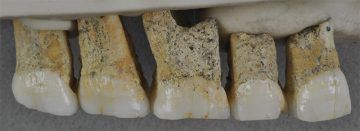Nic Fleming in Nature:
 The human family tree has grown another branch, after researchers unearthed remains of a previously unknown hominin species from a cave in the Philippines. They have named the new species, which was probably small-bodied, Homo luzonensis. The discovery, reported in Nature on 10 April1, is likely to reignite debates over when ancient human relatives first left Africa. And the age of the remains — possibly as young as 50,000 years old — suggests that several different human species once co-existed across southeast Asia. The first traces of the new species turned up more than a decade ago, when researchers reported the discovery of a foot bone dating to at least 67,000 years old in Callao Cave on the island of Luzon, in the Philippines2. The researchers were unsure which species the bone was from, but they reported that it resembled that of a small Homo sapiens.
The human family tree has grown another branch, after researchers unearthed remains of a previously unknown hominin species from a cave in the Philippines. They have named the new species, which was probably small-bodied, Homo luzonensis. The discovery, reported in Nature on 10 April1, is likely to reignite debates over when ancient human relatives first left Africa. And the age of the remains — possibly as young as 50,000 years old — suggests that several different human species once co-existed across southeast Asia. The first traces of the new species turned up more than a decade ago, when researchers reported the discovery of a foot bone dating to at least 67,000 years old in Callao Cave on the island of Luzon, in the Philippines2. The researchers were unsure which species the bone was from, but they reported that it resembled that of a small Homo sapiens.
Further excavations of Callao Cave uncovered a thigh bone, seven teeth, two foot bones and two hand bones — with features unlike those of other human relatives, contends the team, co-led by Florent Détroit, a palaeoanthropologist at the National Museum of Natural History in Paris. The remains come from at least two adults and one child. “Together, they create a strong argument that this is something new,” says Matthew Tocheri, a palaeoanthropologist at Lakehead University in Thunder Bay, Canada.
More here.
